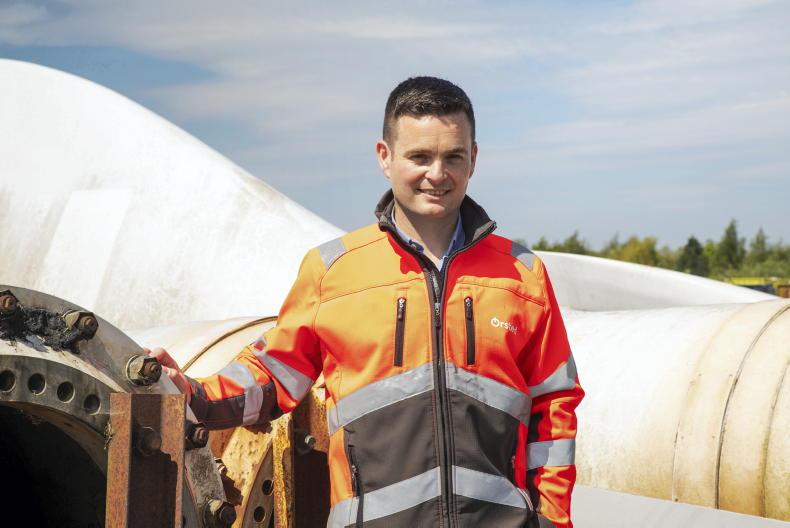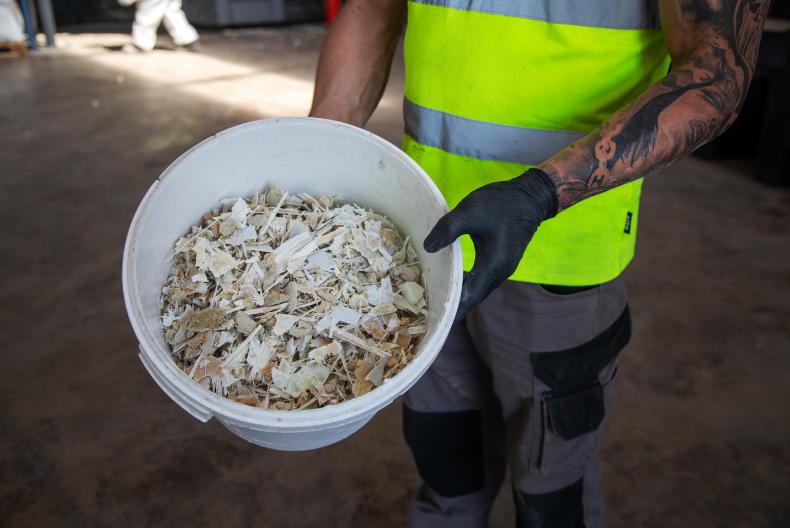When wind turbines reach the end of their life, they are either repowered, repurposed or recycled. For the vast majority of the components of a wind turbine, recycling is relatively straightforward. Steel, copper, aluminium and iron, which make up around 95% of the turbine, are all relatively easy to recycle.
When wind turbines reach the end of their life, they are either repowered, repurposed or recycled.
For the vast majority of the components of a wind turbine, recycling is relatively straightforward. Steel, copper, aluminium and iron, which make up around 95% of the turbine, are all relatively easy to recycle.
However, recycling the blades continues to be one of the biggest challenges facing the wind industry.
Blades are made from composite materials, mostly fiberglass, and are designed to be light, strong, flexible, and last for 30 years or more.
They are not designed to be easily recycled or repurposed. In the past, many blades that have reached the end of their life have been sent to landfills or incinerated. However, most developers have now accepted that this isn’t best practice and are trying to find other solutions.
This is a problem for the entire wind industry, as, by the end of 2025, some 25,000 tonnes of wind turbine blades are expected to come to the end of their operational life in Europe.

The extruded profile is made with 10% wind turbine blade and waste plastic.
By 2050, up to 43 million tonnes of waste blades are projected to be generated globally, according to the University of Cambridge.
To learn more about the innovation taking place in the wind industry to solve this problem, we travelled to Lurgan, Northern Ireland, where global wind developer Ørsted has teamed up with waste recovery company Plaswire to pioneer a blade blending and recycling process, creating a new material which can be used to make a range of products.
The scale of the problem
We first met with Kieran Sharkey, onshore operations manager for Ireland and the UK, at Ørsted who said that the Irish onshore wind industry is quite mature and there are many wind turbines which are reaching the end of their operational life.

Kieran Sharkey, Onshore Operations Manager for Ireland and UK at Ørsted.
Ørsted operates 378MW of onshore wind farms across the island of Ireland, the earliest of which began operating in 1996.
Kieran explained that across Ireland and the UK, Ørsted has around 244 wind turbines with more coming online. That’s a minimum of 732 blades which will have to be recycled over the coming years.
In an effort to find a sustainable way to recycle the blades, last year the company completed a pilot project with Plaswire, which saw three blades from a decommissioned turbine successfully recycled. As a result, many more blades are expected to be sent there for recycling.
Why are blades difficult to recycle?
Andrew Billingsley, CEO of Plaswire, said wind turbine blades are notoriously challenging to recycle.
The main material in most turbine blades is glass fibre reinforced polymer, otherwise known as fiberglass. It’s non-biodegradable and made up of a mix of very fine strands of plastic and glass, which is extremely difficult to process.
Andrew explained that the material is a thermoset and once it sets it cannot be melted and reused again.

Andrew Billingsley, CEO of Plaswire.
“There is also the big issue around health and safety, breaking down these blades runs the risk of releasing particles into the air, such as glass, which are hazardous” he explained.
As such, blades traditionally ended up as waste at landfills or incinerated he explained.
Getting the blades off the site
There is a lot of emphasis placed on getting the blades onto the wind farm and on the turbine. However, blades also need to be moved off site intact to get them to a recycling point, which is equally challenging.
As blades can be upwards of 50m long, they require specialised equipment to remove and transport them.
When asked why the blades can’t be cut up on-site into smaller pieces, Kieran said that this poses its own environmental challenges, and the company prefers to process them in a controlled environment.
However, he said he would eventually like to see the blades processed on the wind farm site, using a small, modular and transportable processing facility.
Recycling process
The process begins when the blades are delivered to Plaswire’s premises in Lurgan and cleaned.
A hydraulic press is used to extract the steel threaded bars that attach the blades to the turbine hub, which can be time-consuming, Andrew said.

The segments are reduced to a size of 30-40mm.
The blades are cut using a wet process, into segments measuring around 60cm by 60cm. Andrew noted that using a wet cutting process is essential to capture dust and particles.
The blade segments are then ready for shredding through a specially designed process that captures the dust. The segments are reduced to a size of 30-40mm.
This material is then processed through a granulator, which reduces the size further to 5mm, making it ready for blending.
The product is then blended with RX polymer, which is a mixture of waste plastics. The wind blade and waste plastic mix are melted and moulded through an extrusion process that uses heat and pressure.
The blended material is cooled after the extrusion process. The end product is an extruded profile, which is sold to be further moulded into a range of products such as garden furniture, fence posts or construction products.

This picnic table is made from 10% wind turbine blade.
The waste plastic is blended with 10% wind turbine blade material, but Andrew is confident that this can be increased to 30%.
He believes that the addition of the blade material enhances the strength and performance of the blended plastic compared to unblended plastic.
Andrew said that Plaswire is currently processing one blade a day, but has plans to increase capacity. At the time of the visit, it had two more extrusion lines on order.
Plaswire is also designing a process that will allow larger blades and sections of blades to be processed more quickly.
Kieran said that the picnic bench we sat on during the interview was made of 10% wind turbine blade material and that it would be installed in the wind farm where the blade was sourced.
Andrew added that the polymer and wind turbine blade mix can be melted and recycled again in the future.
In short
Wind turbine blades are hard to recycle and have traditionally been sent to landfill.A new partnership between Lurgan-based company Plaswire and wind developer Ørsted aims to solve this problem.Blades are blended with waste plastic to create a new extruded profile. This profile can be used to make a range of products. To watch a video of the visit or go to www.ifj.ie/video





SHARING OPTIONS: